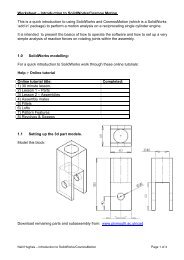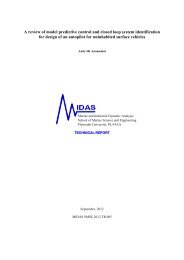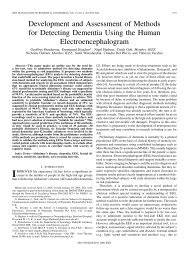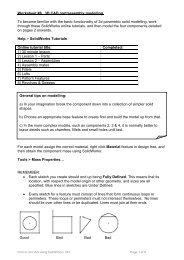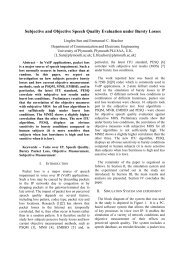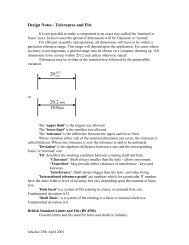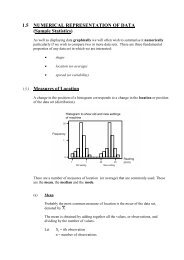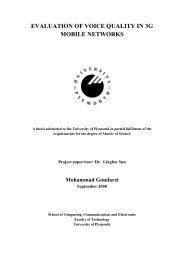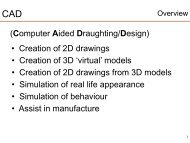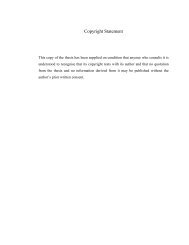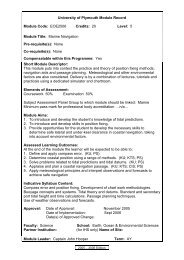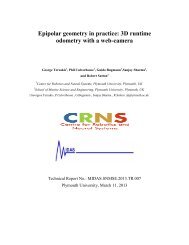Designing an Anaphora Resolution Algorithm for Route Instructions
Designing an Anaphora Resolution Algorithm for Route Instructions
Designing an Anaphora Resolution Algorithm for Route Instructions
You also want an ePaper? Increase the reach of your titles
YUMPU automatically turns print PDFs into web optimized ePapers that Google loves.
However, as in Eckert & Strube’s algorithm, the discourse position also<br />
controls the status of the entities in the S-List. Entities mentioned in the same unit as<br />
the <strong>an</strong>aphor are more highly r<strong>an</strong>ked th<strong>an</strong> entities mentioned in the previous unit.<br />
Within one unit the first mentioned entity is more salient th<strong>an</strong> entities mentioned later<br />
in the unit. The entity which is in the first position of the S-List is the preferred<br />
<strong>an</strong>tecedent of the <strong>an</strong>aphor. So if the corresponding rule is applied, the <strong>an</strong>aphor will be<br />
resolved to the first entity in the S-List.<br />
Unlike in Eckert & Strube’s account, the S-List is not updated <strong>an</strong>d cle<strong>an</strong>ed (which<br />
me<strong>an</strong>s that all discourse entities from the previous unit which are not realised again in<br />
actual unit are removed from the S-List). Eckert & Strube have no discourse model<br />
or, in other words, they only model the attentional state of the hearer as the S-List<br />
which is a partial discourse model including only highly salient entities. The RIARalgorithm<br />
only constructs a S-List when it hits <strong>an</strong> unresolved <strong>an</strong>aphor. The content of<br />
the S-List is always deleted after the <strong>an</strong>aphor is resolved <strong>an</strong>d a completely new S-List<br />
is built up <strong>for</strong> the next unresolved <strong>an</strong>aphor.<br />
The concept of <strong>an</strong> implicit S-List derives from the observation that some<br />
entities are plural objects or complex entities which consists of several elements of<br />
subsets (e.g. crossroads which consists of two crossing roads). The ‘normal’ S-List<br />
only contains entities which are conceptually related to the <strong>an</strong>aphor (hyper- or<br />
subtype of the <strong>an</strong>aphor or the same type as the <strong>an</strong>aphor). The implicit S-List is built<br />
up if a ‘This-NP’-<strong>an</strong>aphor occurs <strong>an</strong>d if the concept of its NP is either <strong>an</strong><br />
element_entity or a complex_entity. If the NP-concept is a element_entity (e.g. ‘this<br />
road’), the implicit S-List contains all entities which have the same concept as the<br />
corresponding complex_entity of the element_entity (e.g. ‘crossing’, ‘junction’,<br />
‘crossroads’ etc.). Conversely, if the NP-concept is a complex_entity (e.g. ‘this<br />
junction’) all entities of the same type as corresponding element_entities are put into<br />
the S-List (e.g. ‘road’, ‘street’, ‘br<strong>an</strong>ch’ etc.). Like the S-List, the implicit S-List only<br />
contains entities mentioned in the previous unit or in the same unit as the <strong>an</strong>aphor.<br />
The RIAR-algorithm resolves discourse deictic <strong>an</strong>aphors almost in the same<br />
way as the Eckert & Strube-algorithm. As soon as the <strong>an</strong>aphor is marked as I-<br />
36



